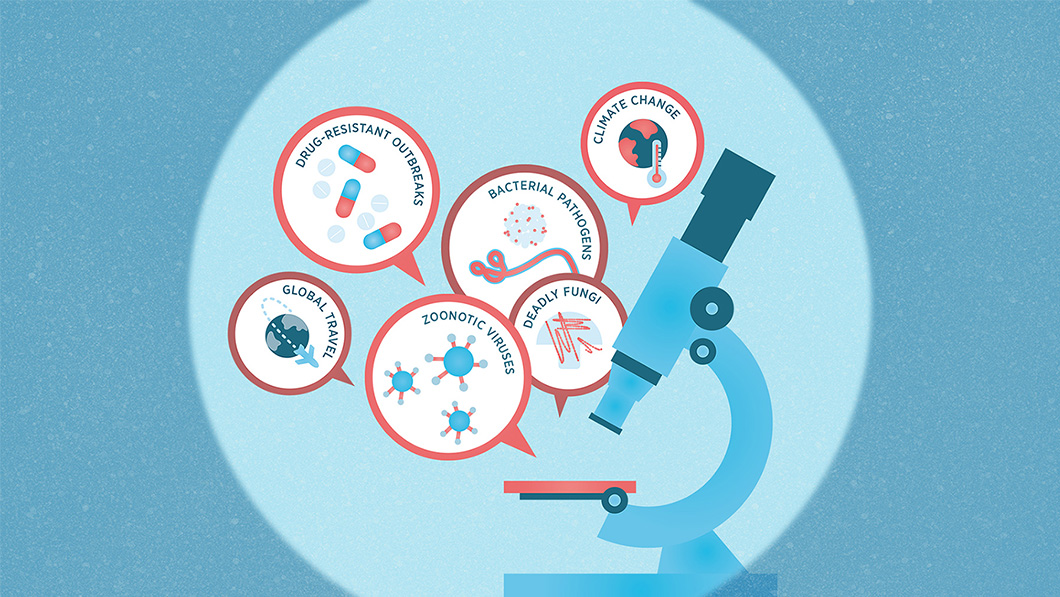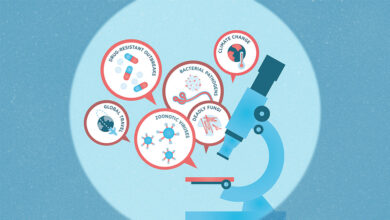
An Olympic risk and bird flu blindness
Sponsored by:

PPF: Health Security
Good morning, here’s what we’re following in the world of health security this week, from air pollution problems to fears about dengue at the Summer Olympics.
Air pollution threat
Almost 70 percent of the 4.2 million deaths attributed to ambient air pollution in 2019 were caused by cardiovascular conditions, according to the World Heart Federation, a leading global NGO for cardiovascular disease prevention. The organization released its latest world heart report, urging air pollution mitigation strategies to mitigate its “profound” health, social and economic consequences.
“The ubiquity of air pollution exposure and its effects on cardiovascular health represents a staggering challenge for global health,” the report reads, noting that the impact is unequally felt across the world. While rates of some cardiovascular diseases related to air pollution have fallen in places like Europe over the last decade or so, they have climbed in lower-income countries, where billions of people not only rely on wood, coal, or crop waste for fuel, but are more likely to be exposed to other harmful pollutants because of lower air quality standards.
“Many air pollution interventions will also help tackle the climate crisis and the health benefits of reducing air pollution far outweigh the economic requirements to achieve them,” the report notes. “A long-term vision is needed to realize these benefits, but the commitment to address them is needed now.”
Meanwhile, researchers at the Children’s Hospital Los Angeles at the University of Southern California have announced they’ll soon start to integrate AccuWeather high-resolution air quality data, along with other environmental information, with electronic health records to help them assess the impact of the environment, such as UV index and humidity, on children’s health.
“For the first time, we can now understand how environmental exposures impact our children across an entire pediatric health system,” one of the researchers said in a statement. “This unlocks our ability to better understand disparities in exposure and heath as well as find opportunities to intervene and reduce the risks of the environment on the health of our children.”
Olympic fever
Dengue’s impact has already been profoundly felt this year in South America, which has experienced the biggest-ever outbreak of the disease. Now, there is concern in Europe that the Summer Olympics in Paris may become a super-spreader event.
The European Centre for Disease Prevention and Control (ECDC) has reported that within the last year, it found 130 locally acquired cases of dengue in the EU, compared with 71 in the 10-year period between 2010 and 2021. It’s a significant increase, thanks to the presence of the Aedes mosquito, which has become more at home in the region due in part to a warming climate. Dengue is spread from person to person through mosquito bites.
“Europe is already seeing how climate change is creating more favourable conditions for invasive mosquitos to spread into previously unaffected areas and infect more people with diseases such as dengue,” said Andrea Ammon, director of ECDC.
As for Paris, which will welcome millions of susceptible people in July for the Games, the city’s health authority has already dispatched a surveillance team of investigators to trap and monitor mosquitos. Could it be a super-spreader event? It’s possible, one parasite epidemiologist, Mark Booth, said this past week. He noted the Aedes mosquito’s adaptability, the heartiness of its eggs and the likelihood they already carry the virus. Plus, visitors will be coming from places that are experiencing dengue, increasing the odds of spread.
Also noteworthy, the relatively high number of asymptomatic cases, raising the possibility that it could be spread unknowingly. “Anyone living, working, visiting, competing, volunteering or even just passing through Paris during the Olympic period is going to be part of a huge natural experiment – whether they know it or not,” Booth wrote.
Big health tech
The White House announced that Google and Microsoft have offered to help in the ongoing effort to protect America’s most vulnerable hospitals from cyberattacks. Microsoft will largely offer discounted or free security products to eligible rural hospitals, as well as security assessments and training for staff. It will also extend security updates for Windows 10 for free for one year.
Google says it will provide free endpoint security advice to rural hospitals and non-profit organizations, as well as discounted pricing for communication and collaboration tools and security support. It said it will also create a pool of funding to support software migration.
But the corporate generosity isn’t without its skeptics. Some experts told STAT News that the initiative isn’t enough and “focuses on marginally relevant upgrades and promotes the interest of big tech companies over cybersecurity firms with a more specific focus on the vulnerabilities in health care,” the site reported.
Ransomware attacks in the U.S. health-care system were up 128 percent between 2022 and 2023.
Blind to H5N1
Where is H5N1? We know it’s in American cattle. And we know now that it’s showing up in mice and cats – at least in parts of New Mexico. There have been a small number of positive human cases, too. But some are now wondering whether we’re still only glimpsing parts of a larger picture – simply because testing is so limited.
“It’s important to know if this is contained on farms, but we have no information because we aren’t looking,” Helen Chu, an infectious disease specialist at the University of Washington in Seattle – who alerted the country to COVID’s spread in 2020 by testing people more broadly – told NBC News.
Benjamin Pinsky, medical director of the clinical virology laboratory at Stanford University, likened the current approach to H5N1 to the early days of COVID, “where early on we only tested people who had travelled, which left us open to not immediately recognizing that it was transmitting among the community.”
Separately, Seth Berkley, the former head of Gavi, the Vaccine Alliance, also criticized the U.S. response to H5N1 given recent experience with COVID. “Are we better prepared?… I would make the argument that H5N1 has suggested that we’re not,” Berkley said. “It’s been shocking to watch the ineptitude of just doing the surveillance, being able to talk about it, tracking the infections, understanding where we are. Do we have vaccines? Are they the right vaccines? It is really a challenge.” (Canada is not currently stockpiling bird flu vaccines.)
Still, the WHO has repeated its position that the risk to public health from H5N1 remains low.
Data deep dives
World Health Organization members and other organizations met this past week for the first-ever Strategic Partners’ Initiative for Data and Digital Health (SPI-DDH) in Copenhagen.
The SPI-DDH aims to identify and address gaps in data and digital health systems across Europe. On the agenda for the group of over 100 representatives: providing an independent “safe haven” for WHO member states to work with external partners in exploring digital health solutions.
In other health conference news, at HLTH Europe in Amsterdam this week, Microsoft announced that the Trustworthy & Responsible AI Network (TRAIN) is expanding to Europe. TRAIN was launched in the U.S. earlier this year by a consortium of health-care leaders to address the use of AI in health care.
TRAIN Europe will include hospitals in Finland, Sweden, Italy and the Netherlands. “AI has the potential to transform health care, but we must remain vigilant about its ethical implications. In TRAIN, we are joining forces across Europe to share knowledge and tools for successful and sustainable implementation of trustworthy and responsible AI into health-care practices,” said Magnus Kjellberg, head of the AI Competence Center at the Sahlgrenska University Hospital in Sweden.
Events
June
-
June 20-21: 7th Annual Next-Gen Immuno-Oncology Conference. Boston, MA.
-
June 26-28: BioPharma Expo. Tokyo, Japan
-
June 30-July 3: European Congress on Biosecurity. Rotterdam, Netherlands.
July
-
July 7-10: ESHRE 40th Annual Meeting. Amsterdam, The Netherlands
-
July 9-12: AIME 24 – International Conference on Artificial Intelligence in Medicine. Salt Lake City, UT
-
July 10-12: CPHI Southeast Asia. Bangkok, Thailand
-
July 24-28: Bio Asia Taiwan. Taipei, Taiwan
Did someone forward you this newsletter? Subscribe to PPF: Health Security newsletter
This newsletter is produced by journalists at PPF Media. It maintains complete editorial independence.



